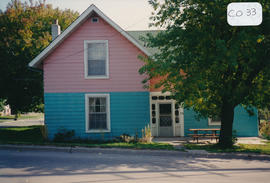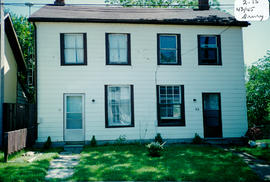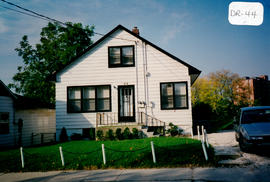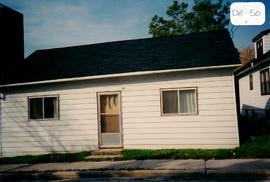250 Barrie Street - The Stoddart House
- CA BWGPL GJ-HB-2017-03-15-13
- Stuk
- 1996
Part of George Jackson fonds
The Stoddart House is located at 250 Barrie Street. It was built around 1870 in the Eclectic Neoclassical style. Some of the early settlers in the Bradford area were members of the Stoddard/Stoddart family. John Stoddard settled along the Bond Head Road in 1829. In later times, Major George W. Stoddart was the reeve of Bradford.
The two-storey building has a rectangular form and a centre hall plan. There is a symmetry in the large window openings (with high floor to ceiling heights). The double-hung windows with painted-wood lug sills are also neoclassical features. The medium-pitched, hip roof, wrap-around porch (with original turned wood post supports), and remaining wood brackets and decorative trim are Regency Revival features. A projecting, bay window at the ground-floor living (or dining) room is a Gothic Revival feature. The house has solid, brick construction and a stone foundation. According to the 2000 inventory, the metal screen door at the entrance is unsympathetic to the original design. It was also notes that the porch needed repair. (1, 3)
Zonder titel










